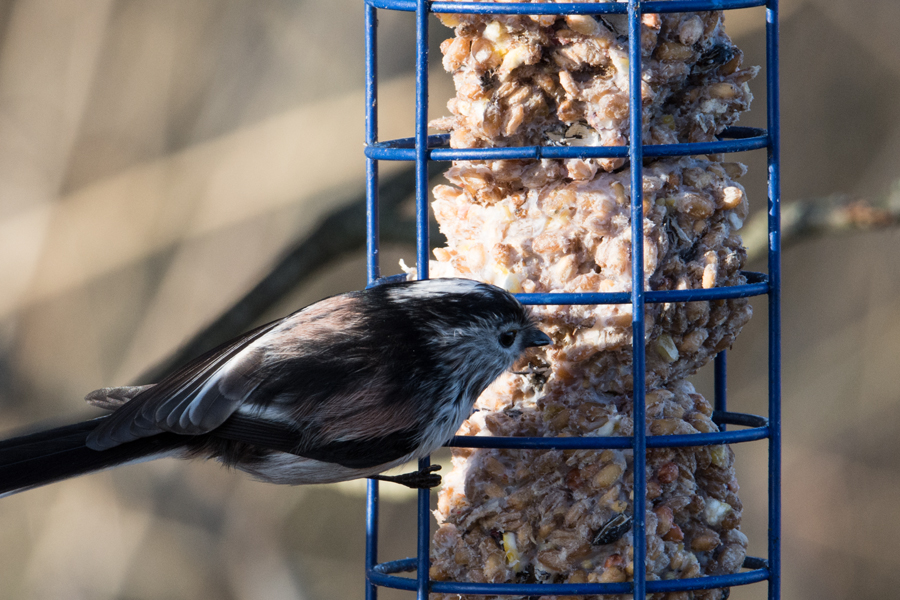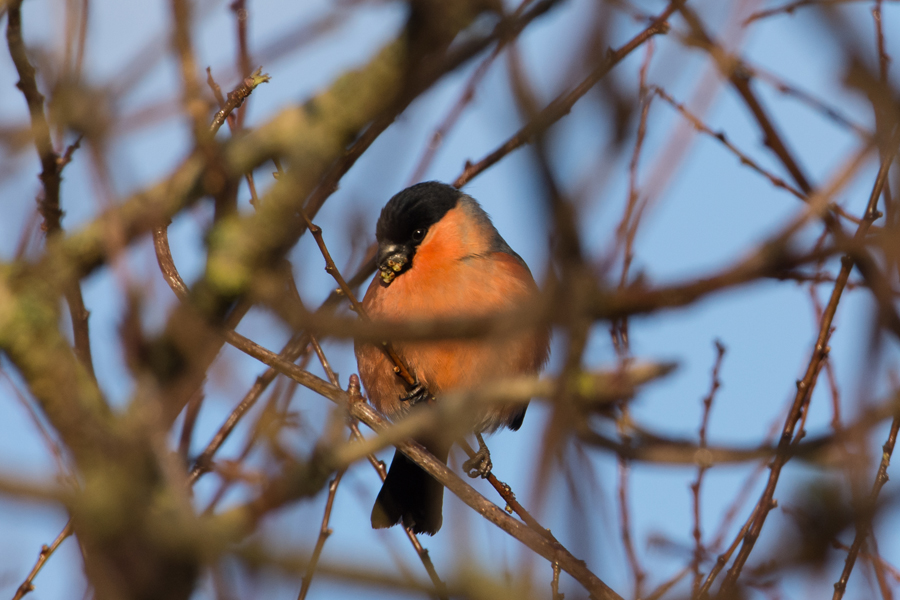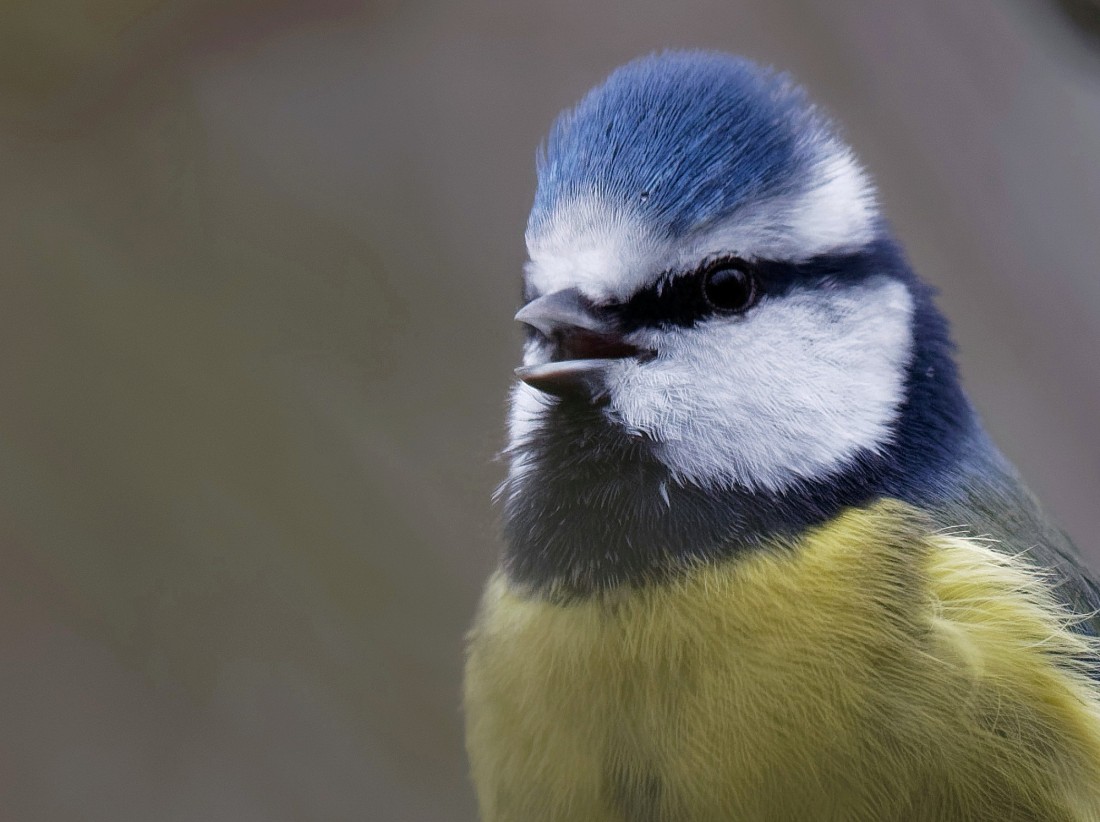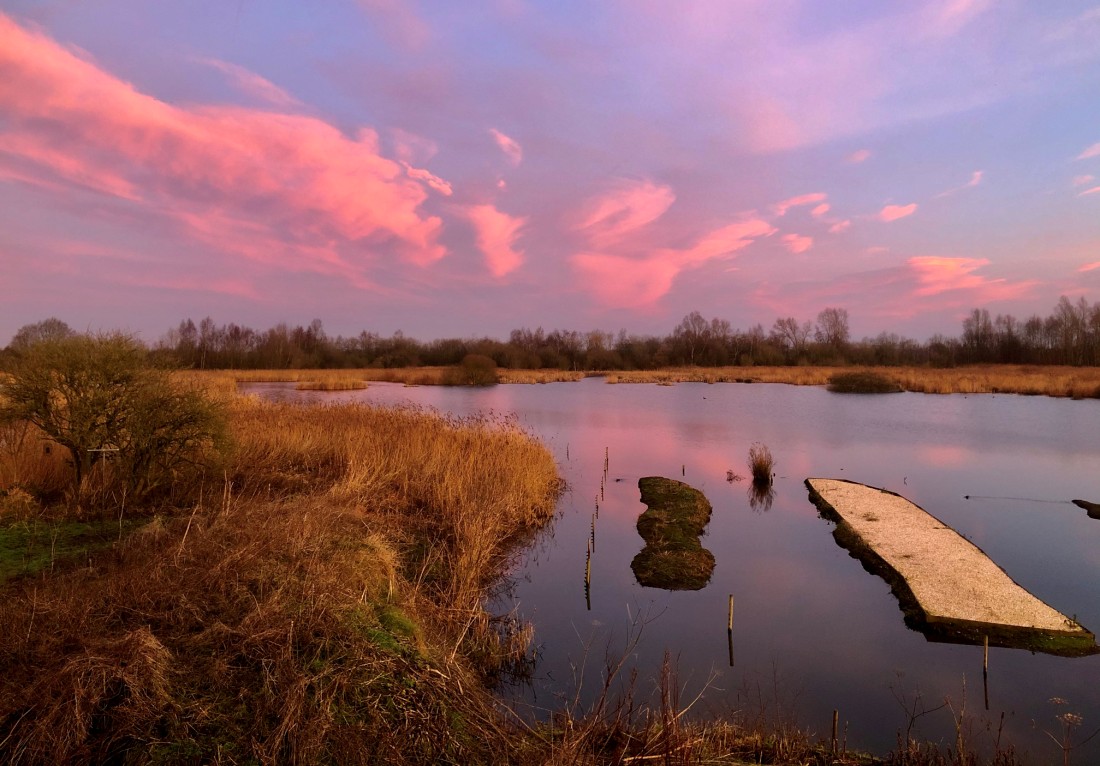Woolston Eyes Monthly Sightings
2020-01-29
A fairly quiet day today but there were plenty of signs that spring is not far away! Both the resident Peregrines were on the viaduct near their usual nest site and a pair of Buzzards were displaying over No.1 bed. Tufted Duck were present in good numbers with a reserve-wide total of 586. Work continues on No.4 bed where about 200 Black-headed Gulls and a similar number of Fieldfares had gathered. Photo; Primroses about to flower among he snowdrops on No.3 bed.
Submitted by: Dave Hackett
2020-01-28
A sleety, dawn start was followed by brilliant sunshine and scudding clouds, producing some dramatic skies. First job was to check on progress with the wetland development on No.4 bed, which is moving steadily despite the difficult working conditions, caused by the exceptionally high water levels. On the cleared area 2 Grey Wagtails, 35 Pied Wagtails and 250 Black-headed Gulls were feeding, all of which were flushed by a passing Marsh Harrier. Then on to No.3 bed to photograph some of the common birds visiting the Hogg Hide feeding station. Photo of Danny Gornall and David Spencer re-erecting the electric fence around the Morgan Hide breeding islands, Cheers David Bowman
Submitted by: David Bowman
2020-01-23
Tundra Bean Goose - Woolston’s first record. One dropped onto No3 Bed this morning with 2 Greylag Geese. It only stayed for c 30 minutes before flying south-east
Submitted by: Daniel Owen
2020-01-22
A rather murky day but plenty of interest. The highlight was the huge influx of Tufted Duck which totalled an amazing 950, the highest for some years. Of these, no less than 427 were on No.3 bed with the bulk of the remainder on the river to the north of Nos. 1 and 2 beds. They were complemented by 29 Pochard whose numbers should now start to increase as we move towards February. Other wildfowl counts of note were 112 Mallard and 34 Mute Swans. Robins were in song in all parts of the reserve with an excellent total of 115, the vast majority of which were singing males. Birds in song included 4 Song Thrush, numerous Great Tits and a Chaffinch. The work on No.4 bed is progressing well and attracted about 120 Black-headed Gulls which later moved onto the Loop. To complete an excellent day the female Marsh Harrier was showing on No.3 bed.
Submitted by: Dave Hackett
2020-01-20
A Beautiful sunny morning on number 3 bed today you could almost forget its mid January, rather a quiet morning. Marsh Harrier quite active putting the teal to flight. a lone Wigeon in front of the J Morgan hide with a few teal. glimpse of water rail. a few goldcrest along the path. photos of kestrel,bullfinch, wigeon and Long Tailed Tit
keith Gallie
Submitted by: Keith Gallie
2020-01-15
WeBS Count 11th January Little Grebe 1, Great crested Grebe 5, Cormorant 8, Mute Swan 49, Grey Heron 5, Shelduck 2, Greylag Goose 58, Canada Goose 55, Gadwall 54, Teal 475, Mallard 75, Shoveler 63, Pochard 9, Tufted Duck 532, Goldeneye 3, Goosander 1, Moorhen 21, Coot 49, Woodcock 3, Black headed Gull 50, Lesser Black backed Gull 2
Submitted by: Brian Martin
2020-01-08
A pleasant day for early January for my first walk of the year round the whole reserve. There were signs of spring with a Song Thrush singing along the canal track and a Little Grebe trilling on No.1 bed. Wildfowl totals included 363 Tufted Duck, 91 Mallard and 74 Coot. Two male Goldeneye were at the weir basin and a female opposite the John Morgan Hide. A male Goosander was also present there. Work is now underway on No.4 bed where a new wetland is being created. Photo; early snowdrops on No.3 bed
Submitted by: Dave Hackett
2020-01-09
Male Lesser Redpoll, one of two that have now found the Sybil Hogg feeding station
Submitted by: Daniel Owen
2020-01-09
Photo of the start of the wetland development on No.4 bed
Cheers David
Submitted by: David Bowman
2020-01-09
A quietish, overcast day on No.3 bed, starting at dawn. The undoubted highlight was a brightly coloured male Merlin which dashed across the lagoon and scattered the Greenfinches on the Morgan Hide feeders. Merlins have become more regular on the Reserve over the past few years, no doubt attracted by the high numbers of small birds drawn in by the winter feeding. Other nice sights were: 31 Cormorants and 480 Woodpigeons leaving roosts, a single Woodcock, 2 Water Rails, 1 Kingfisher, 2 Ravens, 1 Goldeneye, 11 Pochard, 200 Teal, 40 Tufted Ducks, 27 Shovelers, 80 Greenfinches, 40 Chaffinches and 10 Redwings. NIce, also, to see the Snowdrops profusely in flower, hinting that spring isn’t too far away. Photo of a Blue Tit in song Cheers David Bowman (with David Spencer, Dave Steel, Daniel Owen and Danny Gornall)
Submitted by: David Bowman
2020-01-02
A very satisfying start to the New Year. After years of protracted negotiations and fund-raising, we’ve finally managed get started on the creation of an extensive new wetland deposit ground on No.4 bed. This will more than treble the amount of wetland habitat on the Reserve. The first stage should be completed by the end of March. As well as meeting with the contractor for the No.4 bed development, we managed to squeeze in some birding, with highlights of: 1 Goldeneye, 9 drake Pochards, 7 Pink-footed Geese, 1 Brambling, 2 Chiffchaffs, 2 Willow Tits and 170 Redwings. Photo of sunrise over No.3 bed Cheers David (with David Spencer, Dave Steel and Danny Gornall)
Submitted by: David Bowman
























